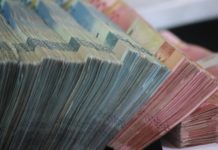
[miningmx.com] — TO learn that one’s innate prejudices are not only shared by others, but even backed up by research, is always reassuring.
I have commented more than once that I have never been convinced of the merits of share buybacks as a way of returning excess cash to shareholders, and I’ve been interested to find that this is an issue in the UK, too.
Indeed, at the recent AGM of Royal Dutch Shell, an angry shareholder stood up, waved his dividend cheque in the air, and cried: “When you give me cash in a dividend payment, I can bank it. But how do I bank my buybacks? Where is the cash?”
There were similar complaints at the Unilever AGM the next day.
It’s also been pointed out that the only people who actually get any cash from share buybacks are people who decide not to remain shareholders any longer, which hardly seems logical; while in many, if not most, cases, investors aren’t told about a buyback until it’s been completed.
In an extreme case, one might even suggest that a buyback operation actually creates a false market in a share, while it’s under way.
Buybacks deluxe
The debate has been stimulated in part by an estimate that corporate UK spent £46bn on share buybacks last year, up 64% on 2005, and the announcements within five days earlier this month of plans by four FTSE100 companies to buy back £5.4bn of their own shares. In the US, S&P500 companies are said to have bought back US$10bn of stock in the first quarter of this year.
That £46bn was more than 40% of the £108bn cash UK companies passed over to shareholders last year, a record percentage. Over the past 10 years, the number of companies that regularly lift their dividends has fluctuated between 70% and 80%. The number that has used buybacks has risen steadily from 14% to 58%.
Buybacks are obviously popular with investment banks, whose stockbroking arms can profit from executing the purchases (though I suspect that in an age of negotiated commissions, margins on this type of business are wafer-thin).
Dividends make the difference
Yet a study by no less an institution than Morgan Stanley has cast the efficacy of buybacks into serious doubt.
Simply, it found that shares of companies that have increased their dividends have performed better over the past decade than those that return cash through buybacks.
Those with the highest buybacks have barely outperformed the market; those with the best dividend records have done twice as well.
Big guys don’t like it either
Institutional investors are also getting unhappy with the buyback trend.
One fund manager is quoted as saying: “We prefer dividends to buybacks and we state that very clearly to companies that ask us.” He added that higher dividends might also make a company less vulnerable to being taken over.
And another: “There can be value creation from buying back cheap shares. But if companies have a permanent increase in their cash flows, dividends are the best way to distribute this.”
In other words, buybacks should only be considered in one-off windfall situations; but even then, how good is the average company in deciding whether its share is “cheap”?
Buybacks can work
In a bull market like SA has experienced in recent years, of course, almost anything has turned out to have been “cheap”; but we mustn’t assume that that will always be the case.
The Morgan Stanley study concludes, paradoxically, that the best years for share buybacks were the bear years 1997, 2001 and 2002 – which may be because that was when the scrip was undervalued against the long-term trend.
One problem is that companies that hand out large amounts of “surplus” cash are implicitly admitting that they have nothing better to spend it on.
In a capital-intensive industry, or one where continuing R&D spending is needed, like pharmaceuticals, this can be seen as a confession of weakness.
One commentator cited the 15% dip in the Merck share price after it announced a $10bn buyback in 2001 as an example, adding that IBM’s $27bn buyback in the late 1990s was also seen as a sign of weakness.
Morgan Stanley concludes that if strong dividend growth is the path to outperformance, one should look for a company with low gearing and a high surplus cash flow. Mind you, that sounds pretty good advice whether you’re a fan of share buybacks or not.










